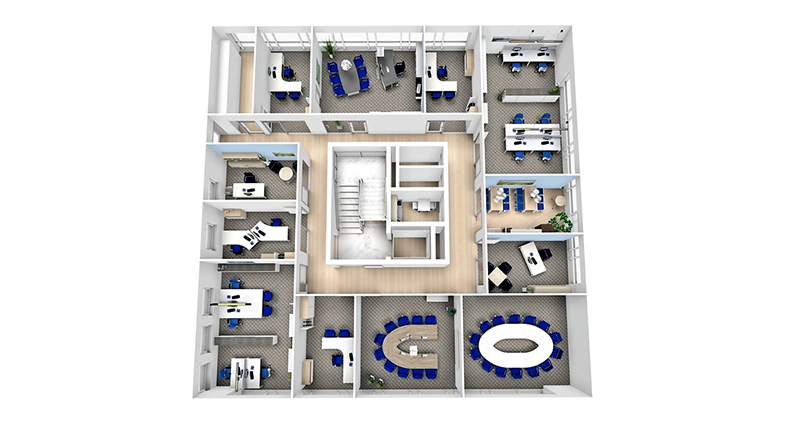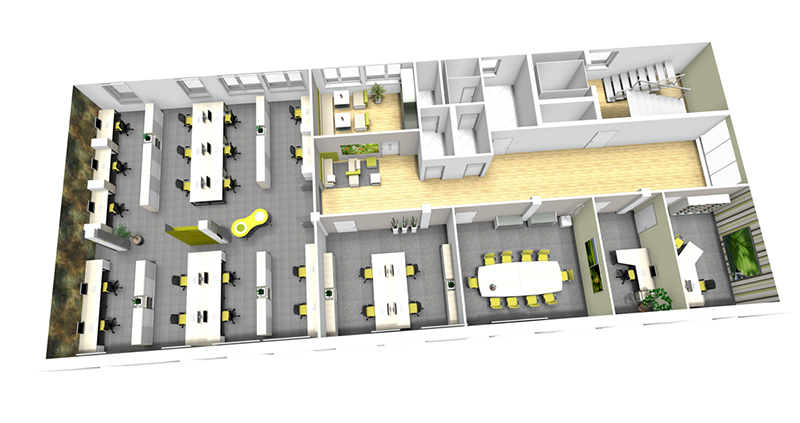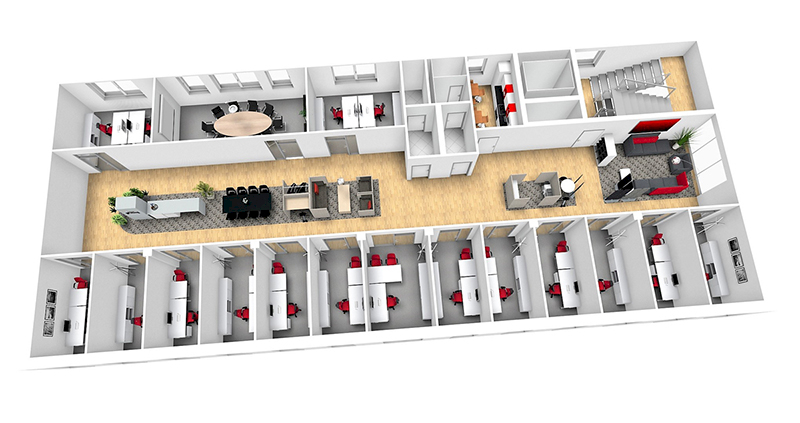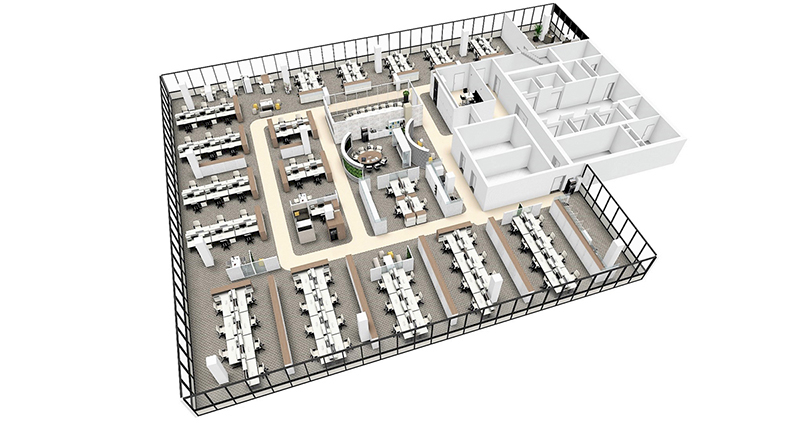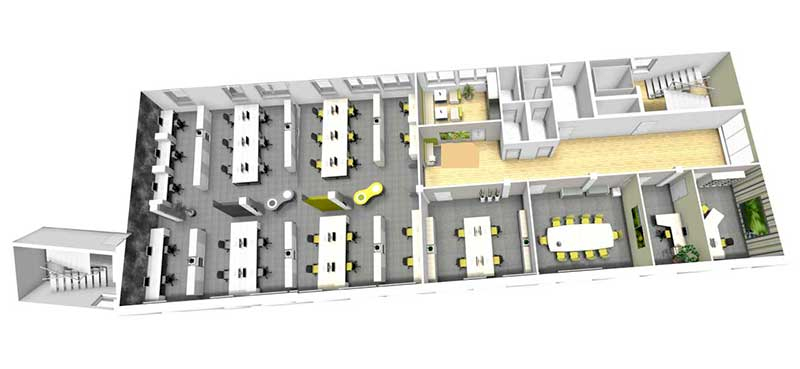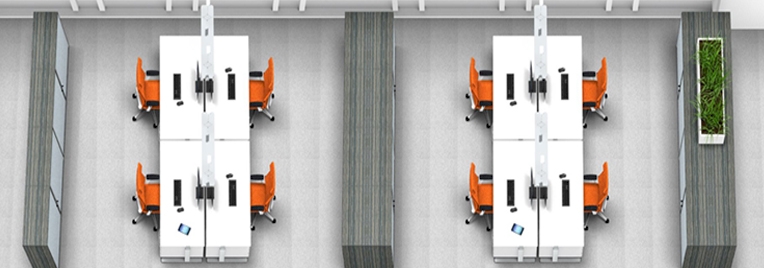
Which office design is the right one?
Individual, open-plan and group offices — every design has its own strengths and weaknesses. We’ve put together a short overview for you to show what purposes each office design is best suited for.
Cellular office
'As a rule, cellular offices are arranged along a building’s outer wall as individual or multi-person offices and are accessible via a shared corridor. Multi-person offices usually consist of up to six desk or visual display unit (VDU) workplaces.” (Definition by ASR A1.2)
Individual offices are especially suited for activities that require a high degree of confidentiality or especially intense concentration. Multi-person offices are optimal if a working group cooperates closely and if individuals need to quickly step in for one another whenever it’s necessary.

Our tip: In the showrooms of the IBA Forum you will find a wide range of ideas for office space design.
Group office
'Group offices are spatial units that are provided to create up to 25 desk or VDU workplaces, as a rule. They are close to windows and are clearly separated from one another by means of partition walls or flexible space-structuring systems.' (Definition by ASR A1.2)
Like multi-person offices, group offices are also ideal for teams that cooperate closely and for organizations in which the possibility to quickly step in for one another is important. However, these spaces are less suitable for concentrated individual work.
Combi office
'As a rule, combi offices consist of a mix of a cubicle office and an open-plan office. Each work cubicle is generally occupied by one employee, and the cubicles are arranged around a common area that includes discussion corners, filing departments, service areas, kitchenettes etc. The cubicles are connected to the common area by glass walls and doors.' (Definition by ASR A1.2)
Combi offices are especially suitable for companies in which a large proportion of the activities consists of concentrated individual work, but which also require lots of space for (spontaneous) communication.
If you are considering combining several small rooms into a larger office unit, you should pay attention not only to the building’s statics but also to the height of the rooms. The rooms should have the following heights:
- at least 2.50 m for floor space up to 50 m²
- at least 2.75 m for space over 50 m²
- at least 3.00 m for space over 100 m²
- at least 3.25 m for space over 2,000 m²
Source: ASR A1.2. You can find more information about this technical rule in the chapter on Area Planning.
Open-Plan Office
'Open-plan offices are organizational and spatial combinations of office or VDU workplaces on a floor space of 400 m2 or more that can be divided up by means of partition walls.' (Definition by ASR A1.2)
Traditional open-plan offices are especially suited for companies that are characterized by very dynamic organizational change.
Modern Open-plan office
Modern Open-plan designs (open spaces) are not an independent kind of space design but a combination of various office areas. They combine different kinds of work and communication zones and thus enable employees to choose the work or common-room area that is the best setting for their current activities.

Work in office settings is often combined with non-territorial work. In other words, all or some of the employees have given up the idea of working at a fixed workplace. The advantage of this arrangement for the employer is that he has to provide fewer workplaces, because there will be fewer empty workplaces as a result of business trips, participation in meetings or vacation time. The advantage for the employees is that they can use vacated areas to structure a variety of working environments for themselves.
Multi-space office
Similar to the modern open-plan office, the multispace office is not a separate office form, but a combination of different office areas. The difference is that in the multispace, the workplaces for focus work are also varied. Usually, larger group offices are combined with a smaller number of individual or multi-person offices.


